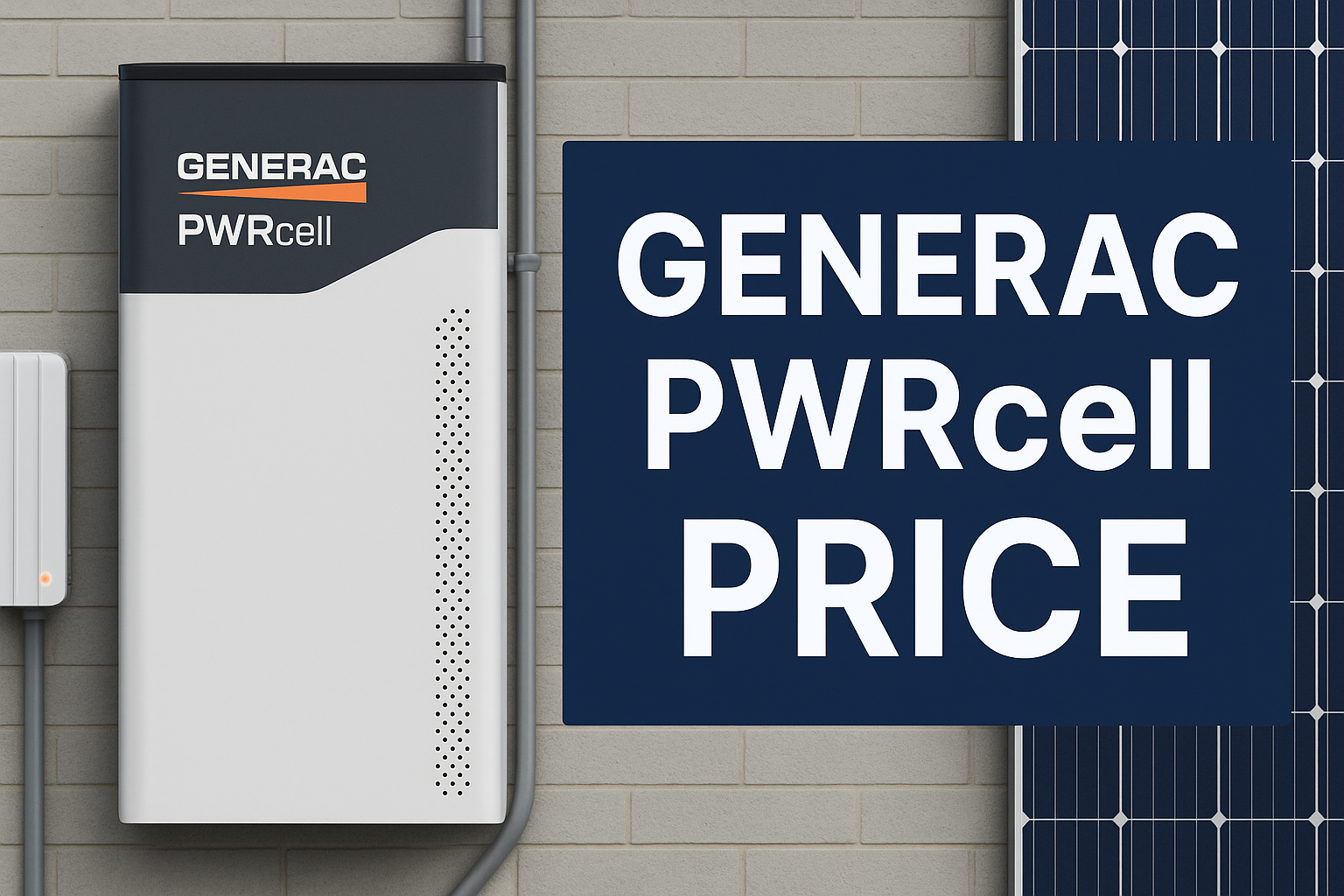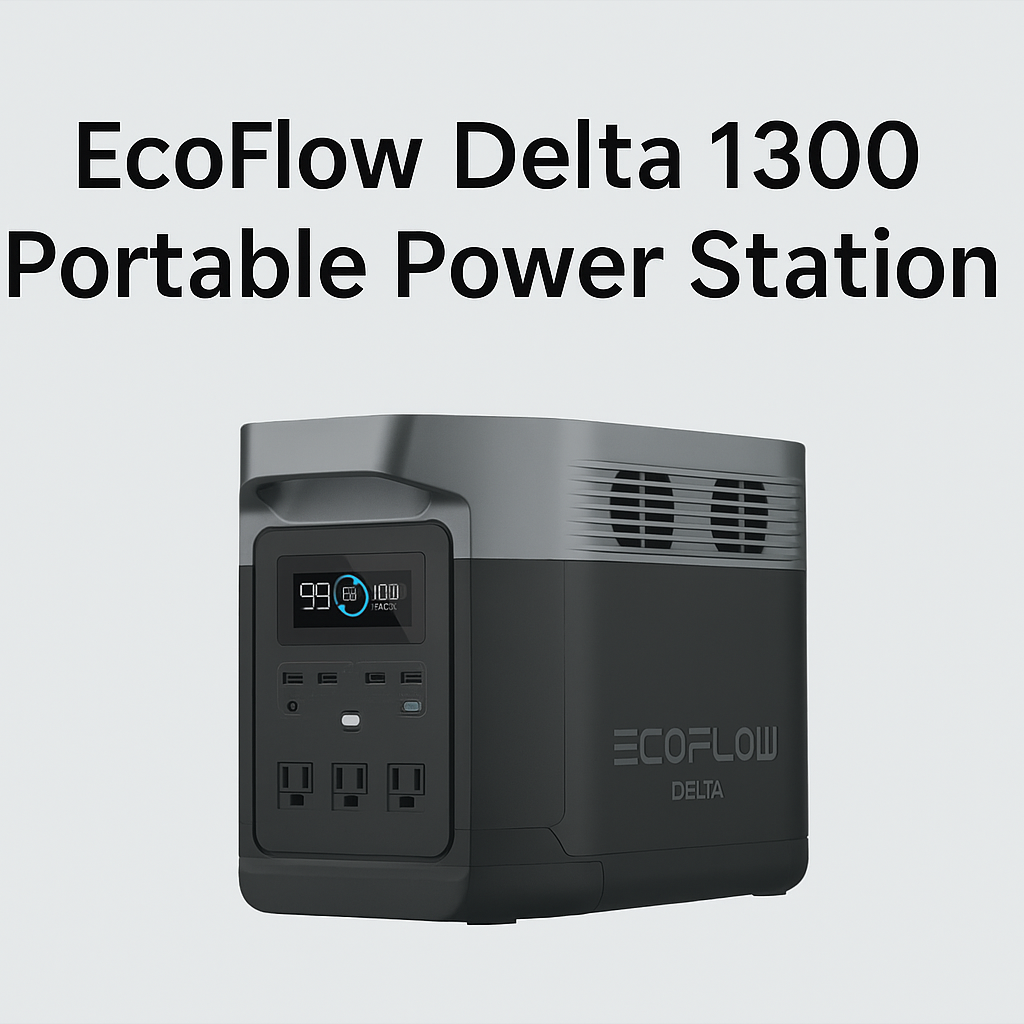What Is the Generac PWRcell?
Originally developed by Pika Energy (acquired by Generac in 2019), the Generac PWRcell is a modular home battery system that stores electricity from solar panels or the grid. It enables backup power during outages and supports time-of-use load shifting for cost savings.
Core Components:
- PWRcell Battery Cabinet
- Generac DCB Modules (3 kWh each)
- PWRcell Inverter (7.6 kW base, up to 11.5 kW with upgrades)
- Smart Disconnect Switch (SDS)
- Optional PWRgenerator (backup generator) and PWRmanager (load controller)
Battery Chemistry: Nickel Manganese Cobalt (NMC)
Scalability: 9 kWh to 36 kWh
How Much Does a Generac PWRcell Cost in 2025?
Pricing varies significantly based on configuration, installer, and location. However, the base model starts at $12,435 (MSRP) and can reach $40,000+ for whole-home backup setups.
| PWRcell Model | Capacity (kWh) | Modules | MSRP (Without Install) | Installed Cost (Est.) |
|---|---|---|---|---|
| M3 | 9 | 3 | $12,435 | $18,000 |
| M4 | 12 | 4 | ~$14,935 | ~$21,000 |
| M5 | 15 | 5 | ~$17,435 | ~$23,500 |
| M6 | 18 | 6 | ~$19,935 | ~$25,000 |
| M6 x2 | 36 | 12 | ~$34,000 | ~$40,000+ |
Prices do not include solar panel installation.
Generac PWRcell Configurations and Pricing Table
Each Generac PWRcell configuration offers different power capabilities:
| Model | Usable Energy | Max Output (kW) | Peak Inrush Power (kVA) | A/C Start Capacity (LRA) | Weight (lbs) | Warranty Coverage |
| M3 | 9 kWh | 4.5 kW | 15 | 76 | 282 | 22.68 MWh / 10 yrs |
| M4 | 12 kWh | 6.0 kW | 19 | 102 | 340 | 30.24 MWh / 10 yrs |
| M5 | 15 kWh | 7.5 kW | 24 | 127 | 397 | 37.80 MWh / 10 yrs |
| M6 | 18 kWh | 9.0 kW | 29 | 153 | 454 | 45.36 MWh / 10 yrs |
All units have a 96.5% round-trip efficiency and support operating temperatures between 14°F and 122°F.
Installed Cost Breakdown
Let’s break down the approximate installation costs for the 9 kWh system:
| Component | Cost |
| 3x Battery Modules (3 kWh) | $7,500 |
| Battery Cabinet | $2,000 |
| Inverter (7.6 kW) | $2,500 |
| Smart Disconnect Switch | $1,200 |
| Labor & Electrical Work | $2,500 |
| Total Installed Cost | $18,000 |
Optional Add-ons:
- PWRgenerator: $5,000–$7,000
- PWRmanager: ~$1,000
- Additional battery modules: ~$2,500 each
Federal & State Incentives
Thanks to the Inflation Reduction Act, you can receive a 30% federal tax credit on the total installed cost of your solar battery system.
Example:
- 9 kWh Installed System: $18,000 x 0.30 = $5,400 credit
- Net Cost: $12,600
Additional Programs:
| State | Incentive Program | Rebate Amount |
| California | SGIP | $150–$1,000+/kWh |
| New York | NYSERDA Storage Rebate | $250/kWh |
| Vermont | Green Mountain BYOD | Up to $10,500 |
| Texas | Oncor PV Program | Up to $9,000 |
Generac PWRcell vs Competitors: Side-by-Side Comparison
| Feature | Generac PWRcell | Tesla Powerwall 3 | Enphase IQ 5P (x3) | FranklinWH aPower2 |
| Max Capacity | 36 kWh | 13.5 kWh (1 unit) | 15 kWh (expandable) | 15 kWh |
| Max Output (kW) | 11.5 kW | 11.5 kW | 11.52 kW (3 batteries) | 10 kW |
| Chemistry | NMC | LFP | LFP | LFP |
| Round-trip Efficiency | 96.5% | 90% | 89% | 91% |
| Warranty | 10 years / 7.56 MWh per module | 10 years (unlimited cycles) | 15 years (6,000 cycles) | 15 years (10,000 cycles) |
| Installed Cost (est) | $18,000 (9 kWh) | $15,600 (13.5 kWh) | $20,000 (15 kWh) | $20,000 (15 kWh) |
Verdict:
- Generac is best for generator integration and whole-home backup.
- Tesla wins on affordability and simplicity.
- Enphase/FranklinWH lead in lifespan and expansion.
Pros and Cons
Pros:
- Highly scalable (9–36 kWh)
- Compatible with generator integration
- Exceptional power output (up to 11.5 kW)
- ATS + Smart Load Management
- 96.5% efficiency
Cons:
- More expensive per kWh than Tesla
- Shorter cycle life vs LFP competitors
- Installation must be done via licensed dealer
Smart Integrations: What Sets PWRcell Apart?
- PWRgenerator: Starts automatically to charge battery during outages.
- Smart Management Modules (SMM): Prioritize loads on up to 8 circuits.
- PWRview App: Monitor energy use, savings, and battery status.
- PWRmanager: Fine-tune power usage across connected devices.
These tools create a robust, responsive energy ecosystem for any home.
Real-World Scenarios & Use Cases
Off-Grid Cabin (M6 x 2 Configuration)
- Capacity: 36 kWh
- Use: Lighting, fridge, well pump, HVAC
- Total Cost (Post-Incentives): ~$28,000
Grid-Tied Urban Home (M4 Configuration)
- Capacity: 12 kWh
- Use: Time-of-use optimization + backup for critical loads
- Total Cost: ~$21,000
Coastal Home with Storm Risks (M6 + Generator)
- Capacity: 18 kWh
- Generator Support: 26 kW
- Use: Whole-home backup
- Total Cost: ~$30,000
Is the Generac PWRcell Worth It in 2025?
If you’re looking for:
- Whole-home backup
- Generator integration
- Scalable battery storage
- Energy independence
…then yes, the PWRcell is worth it — especially when federal and state incentives are available. However, those on a tighter budget may find better short-term ROI with the Tesla Powerwall.
Frequently Asked Questions (FAQs)
Q1: What is the warranty on the Generac PWRcell? A: 10 years or up to 7.56 MWh per module, whichever comes first.
Q2: Can I use a Generac PWRcell without solar panels? A: Yes, but solar optimizes the ROI. A generator or grid charging is required in that case.
Q3: Can the system run HVAC units? A: Yes. The M6 configuration supports up to 153 LRA to start 5-ton A/C units.
Q4: What happens during a blackout? A: The SDS disconnects from the grid and switches to battery + solar or generator backup automatically.
Q5: How long does installation take? A: Typically 1–3 days depending on system complexity and home wiring.


